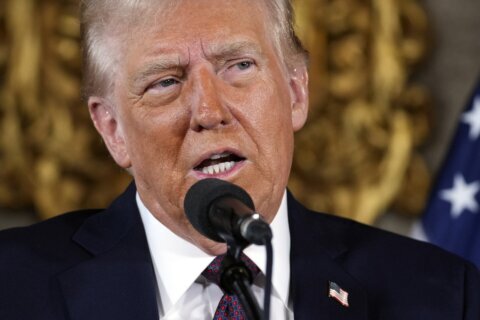These investments pay a return on a fixed schedule.
Bond funds have struggled of late and things are not looking any better as rate hikes continue in 2022. This doesn’t mean that it’s time to purge bonds from your portfolio, however. It just means investors need to be more strategic in the fixed-income funds they hold. Many financial experts suggest focusing on short- and intermediate-term funds that will offer buyers some flexibility if rates rise. Here are eight of the best fixed-income funds to consider for today’s market.
Vanguard Inflation-Protected Securities Fund (ticker: VIPSX)
With inflation seeming to continue unabated, you may want a hedge against inflation in your portfolio. Treasury inflation-protected securities, or TIPS, are a great way to add inflation protection to your fixed-income portfolio. TIPS work by adjusting the bond’s principal in line with changes in the consumer price index, or CPI. If inflation and the CPI rise, so does your principal and, by extension, your interest payments. When the bond matures, you get either the adjusted principal or original principal, whichever is greater. The Vanguard Inflation-Protected Securities Fund is an easy way to access the inflation protection of these bonds without needing to buy individual bonds directly, and at a 0.2% expense ratio, it’s an inexpensive way to do it, too.
Invesco National AMT-Free Municipal Bond ETF (PZA)
Josh Simpson, investment advisor with Lake Advisory Group, says his firm uses PZA in taxable accounts because as a municipal bond fund it’s primarily invested in securities that are exempt from the federal alternative minimum tax. PZA tracks an index of investment-grade, tax-exempt debt publicly issued by a U.S. state. The holdings will have at least 15 years remaining to maturity, although the average duration is just under nine years. The fund has higher yields for a municipal bond fund with average credit risk. It has around $2.2 billion in assets under management and a relatively low expense ratio of 0.28%, which is $28 for every $10,000 invested. “With interest rates so low, there’s really not a lot of options available,” Simpson says. But with a trailing 12-month yield of 2.5%, it’s a good option, especially since it’s untaxed.
Vanguard Intermediate-Term Bond ETF (BIV)
BIV tracks an index of the entire investment-grade market in which maturities range from five to 10 years. The fund has a trailing 12-month yield of 2% and a low expense ratio of 0.05%. This is a good core holding for an investor’s tax-sheltered account. Simpson says he likes to use this exchange-traded fund, or ETF, focused on corporate bonds because it has a medium duration — meaning that if interest rates do rise, the bond ETF isn’t stuck with holdings that won’t mature for a long time. Like PZA, he says, BIV is a good placeholder fund to have while waiting for bond yields to improve. “Because the funds are constantly buying and selling different bonds, the interest rates will change as rates change,” he says.
iShares Core Total USD Bond Market ETF (IUSB)
IUSB is ranked the No. 1 intermediate core-plus bond fund by U.S. News and a gold-rated fund by Morningstar. As a core-plus fund, IUSB allows its managers to have more flexibility in the bonds they own, allowing them to drift into more diverse areas of the market. In the case of IUSB, it means you get exposure to the entire credit spectrum, but its market-cap weighting keeps the emphasis on the highest-quality bonds. With an expense ratio of only 0.06%, you won’t lose much of your return to fund expenses, either.
Dimensional Core Fixed-Income ETF (DFCF)
Justin Halverson, partner and lead advisor at Great Waters Financial, is using Dimensional Core Fixed-Income ETF for his client’s accounts. The fund is designed to be a core fixed-income holding that aims to provide higher returns by varying its duration and credit exposure. The fund managers aim to extend the duration when term spreads — the difference between interest rates on short- and long-term government bonds — are wide while focusing on lower-quality credit when credit spreads — the difference in yield between bonds of different credit rating but the same maturity — are wide. Morningstar notes that it consistently takes less credit risk than other funds in the long-term bond category, holding more AAA-rated bonds relative to BBB-rated bonds than its peers. The expense ratio of 0.19% puts it in the second-lowest fee quintile among peers, according to Morningstar.
Dimensional Short-Duration Fixed-Income ETF (DFSD)
Halverson also uses the Dimensional Short-Duration Fixed-Income ETF for his client portfolios. Another possible core bond holding, DSFD uses the same duration and credit management strategy as DFCF but for bonds with maturities of five years or less compared to the 20-year-or-less maturities in DFCF. Similar to DFCF, this fund also leans toward higher-rated credit than its short-term bond peers, according to Morningstar’s analysis, noting that such a low-risk approach may help DFSD fare better in bear markets. With an expense ratio of 0.18%, it’s an inexpensive way to get short-term fixed-income exposure.
Fidelity U.S. Bond Index Fund (FXNAX)
The purpose of holding bonds in a portfolio is to provide a reasonable degree of stability, says Don McDonald, education director at Vestory by Apella. This Fidelity fund can act as a core investment-grade bond holding in a portfolio. McDonald notes that the fund focuses on high-quality investments, “so that internal losses, due to default, are nearly impossible.” The fund tracks the Bloomberg Barclays U.S. Aggregate Bond Index, which includes investment-grade, U.S. dollar-denominated bonds with at least one year until maturity. McDonald also says that FXNAX holds bonds with “reasonable” durations of five to seven years, which means the fund won’t be too affected by rising interest rates. The fund comes with a low annual cost of 0.025% and yields 2.4%.
Vanguard Total Bond Market ETF (BND)
Another fund McDonald recommends is BND, which has similar qualities to FXNAX, offering stability and an average duration of more than six years. The fund also holds high-quality assets — and plenty of them, with more than 10,000 bonds, nearly 69% of which are rated AAA. Even if there’s a default of one of the holdings, “in the rare case where that occurs, the effect will be small, as it is so broadly diversified,” he says. The fund has a low fee of 0.035% and a 2.7% yield. As an ETF, there is also no investment minimum, and with many brokerages offering commission-free trading, you may be able to purchase it for as little as the price of one share. All those factors help make it a solid choice for a core holding. “When you own the entire world, it is impossible to lose all of your money in any situation short of a planetary extinction event or zombie apocalypse,” McDonald says.
8 great fixed-income funds to buy for 2022:
— Vanguard Inflation-Protected Securities (VIPSX)
— Invesco National AMT-Free Municipal Bond ETF (PZA)
— Vanguard Intermediate-Term Bond ETF (BIV)
— iShares Core Total USD Bond Market ETF (IUSB)
— Dimensional Core Fixed-Income ETF (DFCF)
— Dimensional Short-Duration Fixed-Income ETF (DFSD)
— Fidelity U.S. Bond Index Fund (FXNAX)
— Vanguard Total Bond Market ETF (BND)
More from U.S. News
7 Stocks That Are Good Inflation Investments
8 Best Real Estate Stocks to Buy
7 of the Best Long-Term Stocks to Buy
8 Great Fixed-Income Funds to Buy for 2022 originally appeared on usnews.com
Update 04/13/22: This story was published at an earlier date and has been updated with new information.







